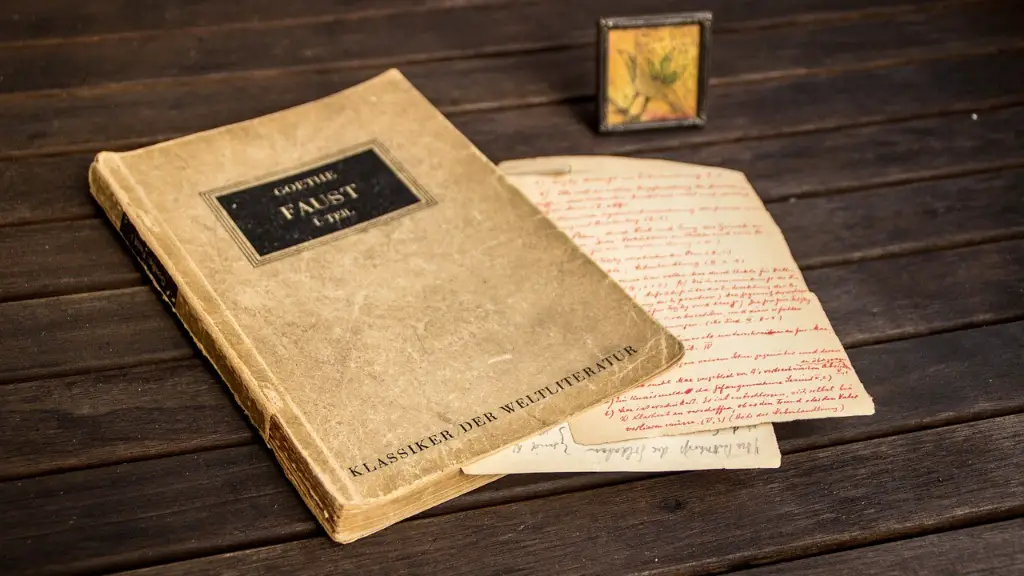Organizing Your Poems
Organizing your poems for a poetry book is one of the first steps when creating one. This can be done in various ways-chronologically, by genre, or a mixture of both. Whatever organization style you choose, it needs to add a level of depth for readers so they can explore the book as an entire work. You may also want to leave room for readers to explore your work as individual poems rather than a collection. Consider adding a poem or two between the chapters in an effort to provide a “bridge” across the book’s main themes or topics.
When creating an outline, think of themes and topics related to your writing. Consider adding titles and subtitles to help organize your poems and readers can get a better understanding of the story you are trying to tell. Most of all, leave yourself room to explore your creativity.
Creating Unique Designs
Creating a unique design for your poetry book is a great way to add a level of depth and interest for readers. If your poems are written in a specific style, such as a free-verse or a traditional type of verse, try to represent that same style in your book’s design to create continuity. Designing a creative cover and interior pages can showcase your poems in a more captivating way, making it easier for readers to engage in your story. Alongside tangible designs, you can also add visual elements that could contribute to readers’ understanding of your words, such as illustrations and photos.
When creating typography, look for fonts and lettering that go beyond the standard sans serif or serif. This can help capture readers’ attention and encourage them to stay invested in your work. Visuals and illustrations, meanwhile, can be used as tools to add personality to your poetry book and bring attention to your work that would otherwise be missing in a digital age.
Engaging Readers
It’s important to engage your readers when creating your poetry book. You can do this in different ways, such as by creating a biographical page that introduces the author and gives insight into their story and journey. Additionally, you can use comments from readers, press coverage, or quotes from peers to add an additional layer of context for readers to understand.
Another way to engage readers is to add a foreword written by an established author or poet. This foreword can help draw readers further into your work and show them how your stories can relate to a larger community and audience. Lastly, adding quotes or excerpts from your poems in your book’s cover or page designs can add another layer of visual interest and show readers what your book is about.
Finding Publishers
Finding the right publisher for your poetry book can be a daunting task. Start by looking for reputable and reliable publishers who specialize in poetry. Make sure the publisher has a good working relationship with poets and knows the market for the type of work you are trying to publish. Consider reviews from other poets who have published through the same publishing house, and attend book fairs and conferences.
Networking with other writers and poets is an important part of the process. Reach out to writers, editors, and publishers and gain feedback from them on your work. Their opinions and advice can help you in the long run. You can also search through publisher websites and directories, like the Writers’ Digest database.
Getting Your Poetry Book Ready for Distribution
The last step in creating your poetry book is to get it ready for distribution. Ensure that your book is complete and that any errors have been corrected. It’s also a good idea to create a marketing plan so you can reach a wider audience and build your readership. This plan should include a press release to introduce your book to editors and potential readers, a website or blog to promote your work, and a presence on social media.
Finally, create a budget and determine how much money you can invest in self-publishing your book. Consider enrolling in self-publishing services such as Amazon’s Kindle Direct Publishing or KDP, which can provide editing services and printing options to help you get your book ready for distribution.
Promoting Your Poetry Book
Once your book is available to the public, it’s important to promote it. Start by joining online networks and forums related to poetry. This can help you build awareness for your work and ensure readers are aware of your book’s release. Additionally, attend book events and shows to introduce your work and build connections with potential readers.
You can also create a marketing campaign using social media platforms. You can upload visuals and quotes from your book, write blog posts or articles related to your work, or offer discounts or bundles to encourage readers to purchase your book. Additionally, reach out to local bookstores to see if they’d be interested in hosting book signings or other events.
Submitting To Conventions and Journals
Submitting your poetry to book conventions and journals can help get your work in front of more potential readers. Make sure you research conventions and journals that best fit the style and genre of your work. Additionally, work on creating a compelling submission package, including a short bio and photographs, to help show off your best work.
Most journals and conventions require writers to have a portfolio of their work before they accept any submissions. Make sure to create a well-organized portfolio on your website or blog to showcase your poems and gain more visibility for your work. Consider creating a digital portfolio as well, which can help introduce your work to publishers and other professionals in the industry.
Getting Book Reviews
Getting book reviews is a great way to encourage potential readers to purchase your book. Start by sending out advance copies of your book to dedicated book reviewers, editors, and other professionals in the industry. This can help spread the word about your work and encourage readers to give their opinion.
You can also create a social media campaign around your book reviews. Share excerpts and quotes from reviews to help show readers what other people think of your work. Additionally, you can engage readers in conversations on social media and gain feedback or input on any changes they’d like to see in your book.
Designing Your Poetry Book
Designing your poetry book is an exciting process that can be a great way to add creative flair to your work. Start by figuring out the overall look and feel of your book—consider colors and fonts that fit the design of your work and create a cohesive narrative. Make sure to keep your design clean and easy to navigate, so readers don’t get overwhelmed when dealing with too much information.
When creating a cover for your book, consider adding visuals or photographs that will help add to the story you’re telling. Additionally, consider using illustrations or word art to provide readers with a unique experience while exploring your book. And don’t forget to design an interior page design in the same style, such as use the same colors and fonts, to create a cohesive visual look.
Marketing Strategies
Once you’ve released your poetry book, consider crafting a marketing strategy for your work. Develop a plan that outlines your book’s goals, target audience, and any promotional ideas you have for your work. Additionally, establish a timeline for when promotion should begin and end.
When promoting your book, make sure to reach out to potential readers through social media and other media outlets. You can also send out press releases, create an advertisement campaign, and participate in book readings and conventions. When creating social media posts, make sure to engage viewers by asking questions and encouraging discussion around your work.
Creating a Book Launch Event
Creating a book launch event is a great way to announce the release of your book to a wider audience. When planning an event, establish a budget and figure out any costs that are associated with the launch. Also, determine who you will be inviting and any venues that are suitable for the celebration.
Once you have settled on a budget and location, create flyers and other visuals to help promote your event. Make sure to establish a website or blog where viewers can get more information about your event and book launch. Additionally, design a custom landing page for your event to capture information from potential readers. Lastly, make sure to share news about the event on social media and other outlets.


